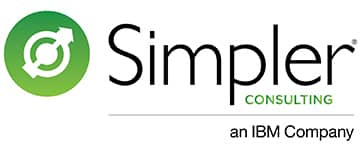
Enhance value stream analysis with process mining and AI.
Previously, I shared some thoughts regarding integrating a technological perspective into the outputs from the Value Stream Analysis (VSA) process. Specifically, I advocated including Industry 4.0 components into both the visioning of the business’ future state and implementation planning as part of a more robust VSA process. Capturing “Voice of Process” data via Industry 4.0 technologies, converting that data to insights and then into decisions and actions is this next frontier – VSA 4.0! I am now thinking more comprehensively about the quality and depth of data as inputs to workflow analysis and improvement.
Traditional Value Stream Analysis
Typically, inputs to the VSA process include process mapping and data collection. The process mapping attempts to capture the “current state” or actual “as is” workflow instead of the “as designed” process. Data collected usually comes from manual analysis of data exported from Enterprise Resource Planning (ERP) systems or actual process observations. I am always amazed at the depth of learning and insights gained into the reality of the current business process resulting from that level of analysis. Even so, there can be limitations:- Data-based processes are not easily observable. It’s not possible to physically observe the work in process and inventory of digital transactions.
- Manual process observations are time consuming. It’s usually only practical to make a few dozen observations on a sampling of the process steps or a portion of the work force.
- Human observations can be inaccurate and introduce unintentional bias.
Technology Enabled Process Analysis
Technology can bring much value to analyzing of the current state of a business process more deeply.
For example, we can use process mining, with Celonis or similar technologies, to more deeply understand how knowledge-based work and information are actually flowing. Process mining captures all digital transactions and automatically maps them for actual sequence, frequency, and flow time (including both work and queue times). Seeing and analyzing the actual flow path of tens of thousands (or more!) of digital transactions is infinitely more enlightening than the use of traditional process maps or “spaghetti” diagrams subjectively developed from a much more limited set of observations.
Augmented Intelligence-enabled (AI) video technologies, such as those provided by Drishti Technologies and others, are equally exciting for observing manual manufacturing work processes. Video technologies make it possible to observe work at a large scale across single or multiple workstations. AI and statistical analysis can then expose variation (over time, person-to-person, shift-to-shift) or one-off anomalies (equipment, materials, or human) to find improvement opportunities. It is exciting to consider the increased depth of insights we can gain from video observations and technology enabled analyses.
Limitations
Process mining and video analysis technologies are not magical approaches to Value Stream Analysis. However, they can greatly augment human observations to increase the depth of understanding of actual work processes. Don’t be lulled into “conference room kaizen”. Continue to invest time observing the actual work. For example, in a transactional work process, what other steps are taking place that may not be captured by process mining? Examples include off-line spreadsheet work, instant messages, and email for clarifications and corrections, and other workarounds. In physical work processes, continue to manually observe to fully understand what really happens. For example, interview those directly executing work for insights related to impediments to executing at takt time, where rework occurs, and where inventory accumulates.
Conclusions
Modern quality practice emphasizes that the quality of inputs directly impacts the quality of outputs. The same applies to operational excellence. Consider using technologies such as process mining and video analysis, as a complement to your traditional Value Stream Analysis methods, to enhance the depth and quality of your analysis and resultant improvement planning.To learn more about how we can help you improve Operational Excellence system and results, contact me at Jlittle5@us.ibm.com.

Jim Little
Partner, Industrial Sector
Simpler Consulting, an IBM Company
+1-512-568-6602
Jlittle5@us.ibm.com
The views contained in this blog are my own and do not necessarily represent Simpler Consulting’s nor IBM’s positions, strategies, or opinions.



